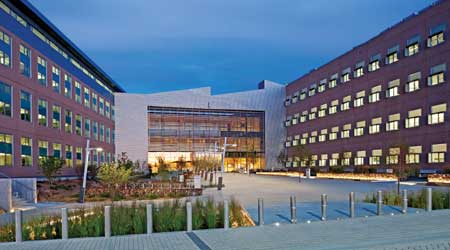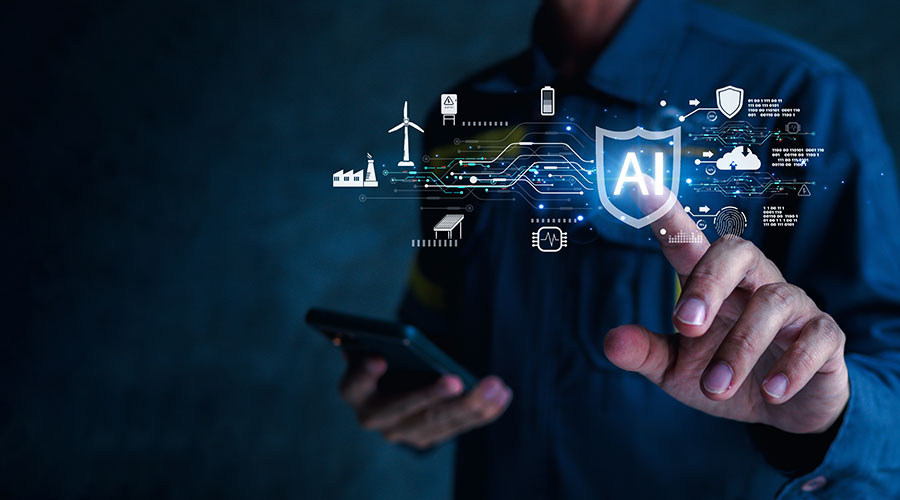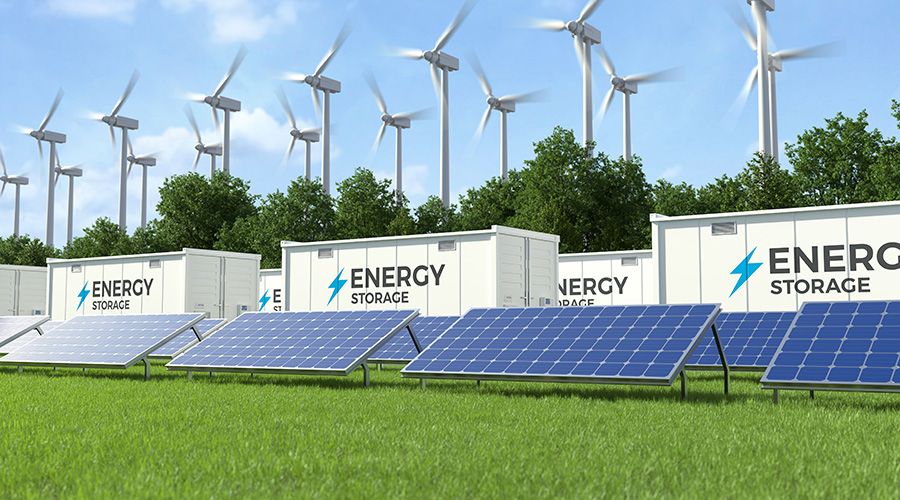 Completed in 2008, the 340,000-square-foot National Renewable Energy Laboratory research support facility showed that even very large buildings could reach net-zero energy goals and helped pave the way for a new generation of net-zero projects.Frank Ooms
Completed in 2008, the 340,000-square-foot National Renewable Energy Laboratory research support facility showed that even very large buildings could reach net-zero energy goals and helped pave the way for a new generation of net-zero projects.Frank OomsIntegrated Design Is a Must for Net-Zero Energy Success
A close relationship between operations staff and designers is a key to success for net-zero energy buildings.
Developing a net-zero energy building requires an integrated, highly communicative process. A traditional design/build/hand-over/operate scheme lacks the feedback loops needed to make early design or later operational decisions that net-zero requires. The design/build process better supports the multi-disciplinary integration needed to deliver a net-zero ready building.
With an integrated design process, the designers have the benefit of continuous feedback from the engineers and contractors before they commit to a design approach or concept. Instead of each team (design, build, and operate) working in silos on each phase with information lost in the handover between each party, or reverse-engineering building systems into an untested design concept, they are connected from day one. The integrated team speaks the same language, shares information, vision, goals, and desired outcomes, and can be confident that design will reflect the best engineering solution available.
Design: Rapid iteration and VR
By reducing a building’s reliance on powered systems to maintain comfort and operate, a design tilts the needle toward net zero. Passive design strategies can include selection of materials, façade buildups, tight and well-insulated walls, location of façade openings, orientation of atriums, and shading devices. For instance, high-performing glazing and shading tuned to each façade orientation and space use makes it possible to achieve the optimal balance between transparency and daylight penetration while minimizing cooling and heating loads on a commercial building.
New analytical tools make it possible to rapidly explore design iterations and their impact on a building’s appetite for energy. Collaboration using parametric analysis to rapidly iterate, discover a multitude of design solutions, and compare their performance allows the team to make fast, informed decisions. We are quickly moving towards a 3D design environment where architects can create and test initial design concepts while simultaneously communicating with engineers as to how these concepts will affect the building’s heating and cooling requirements, overall energy performance, internal comfort, and achievement of project goals.
This increased level of collaboration between architects, engineers and energy analysts is a significant development. For a truly integrated design process, every member of the project team must be aware of what assumptions went into the energy model, and what specific inputs are used to make the final prediction of energy use of the building.
The integration of virtual reality tools into the design process is also growing, with significant potential as an educational tool for operations, setting up a building up for ongoing success. Facility staff and managers can put on a headset and walk through a building in virtual reality, not only locating but also learning how to operate the lighting sensors, operable windows, thermostat; they can identify any logistical or functional issues before construction has begun.
Modeling real-world scenarios
The devil is in the (construction) details. The net-zero energy building process truly starts to differentiate itself from its low-energy-use, sustainability-program-driven counterparts in the construction phase. The first step is to make sure that the members of the integrated design and construction teams embrace net-zero energy thinking. The net-zero energy lens must be applied to every decision, and it’s up to the contractors working in the field to bring the net-zero energy vision to reality.
For example, traditional engineers are quick to assume that an energy model is built around worst-case equipment performance from a pre-selected group of vendors. Net-zero energy models aren’t made this way, but rather are based on best available information during design to neither over-predict nor under-predict performance. It’s important that integrated teams understand the assumptions and inputs that inform their shared energy model, which ultimately predicts energy use of the building.
Related Topics:














